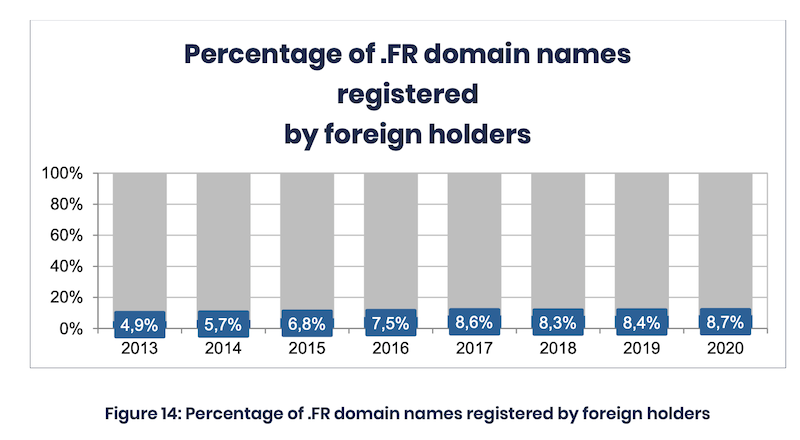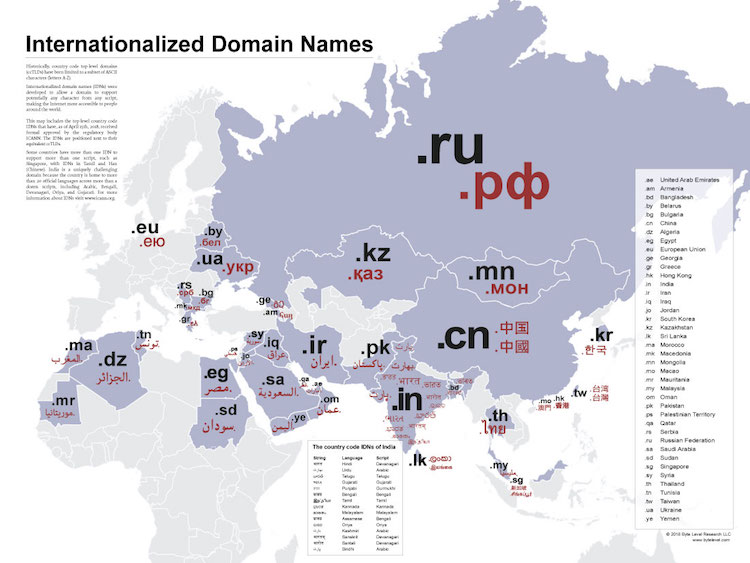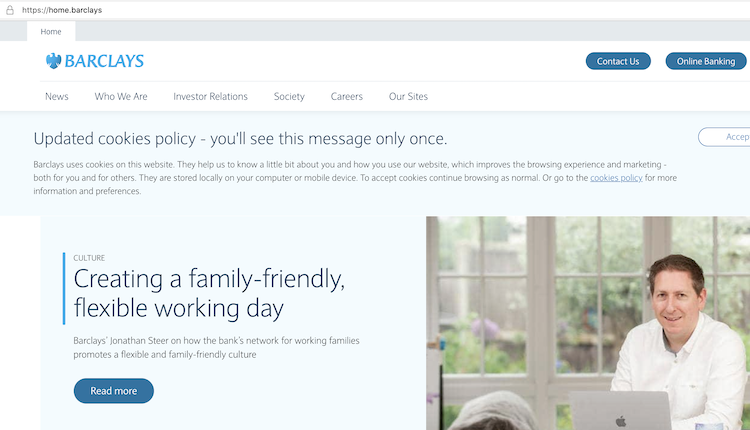One of the major takeaways from the Web Globalization Report Card is the importance of providing “front doors” to your localized websites.
These doors begin with the addresses themselves, which may not include the .com domain. In fact, I’d recommend that most localized websites not use the .com domain, as this is an overloaded domain.
This article looks at the many ways brands are creating more localized addresses, beginning with country code top-level domains (ccTLDs).
Country codes

There are more than 250 country codes in use around the world. Some are enormously popular, such as .de in Germany and .jp in Japan. Others have been licensed for purposes well beyond their countries, such as .co (Colombia) which is used as an abbreviated .com domain.
Let’s look at .fr (France).
It has more than 3.6 million registrations, growing 7% in 2020. But what’s most interesting is the growing percentage of domains registered by foreign owners:

This is a sign that more international companies are investing in the domain as a way to better connect with locals. In many countries around the world, brands that use country codes enjoy a higher level of trust with consumers.
According to the 2021 Report Card, more than two-thirds of the websites studied now use country codes for one or more local websites.
Internationalized domain names
If you looked closely at the country code map above you may have noticed that every ccTLD is displayed in Latin characters. And yet most of the world does not speak languages that use Latin characters, such as China, Russia, and most of the Middle East.
Which leads us to internationalized domain names (IDNs). Shown below is a map of the world’s IDNs:

The uptake of IDNs has been highly uneven, due to many factors. But I’d say that Russia is one of the leaders in its adoption of IDNs. South Korea also has been an early adopter of IDNs.
André Schappo has curated a number of IDNs here. Such as IDNs in Korean (Hangul script):
- 샘표.한국(Sempio Foods)
- 한국인터넷진흥원.한국 (KISA)
- 승용기사.닷컴 (Jobband)
Regional domains
While country codes are aligned with the United Nations definition of country, there are regions around the world that don’t adhere to this definition, or that are more cultural- or city-specific. These domains fall under the generic top-level domain (gTLD) umbrella and include such domain as .NYC, .berlin and .cat (Calatan).
For example, let’s suppose you want to target Scotland. You could register .co.uk thinking that will do the trick. But there there is this little mess known as Brexit which could see Scotland jump ship to the European Union. So what then?
Well, there is .scot. So far, I have not seen many examples of international organizations using this domain, but plenty of local examples, such as the Scottish Parliament (parliament.scot):

And Scotland’s nature agency:

One regional domain that is growing in popularity is .cat, for Catalan.
Airbnb is a prominent early adopter of this domain:

Brand domains
Next there are domains that companies register to support their brands. Imagine a brand name with no suffix, just .brandname.
This is probably the most fascinating aspect of domain names currently because it permits brands to become de facto registrars. In other words, a brand can use its registered domain to offer any number of services, limited only by its imagination. For example, BMW (which has registered .bmw) could offer its customers their own personalized BMW email addresses. Here are two websites that currently make use of their brand TLDs:
Barclays

KPMG

For now, brand domains are more potential than actual; hopefully that will change in the year ahead.
Think local
These options are just that, options. What matters most in the end is which option matters most to your customers around the world. You may discover that ccTLDs work best in some markets while .com works better in other. While I tend to prefer a more globally consistent strategy, few companies have registered all potential ccTLDs. And brand domains, while impressive, carry significant upfront and ongoing costs that are well out of reach of most small businesses.
PS: Our country codes map is now on sale in the Global by Design shop.
